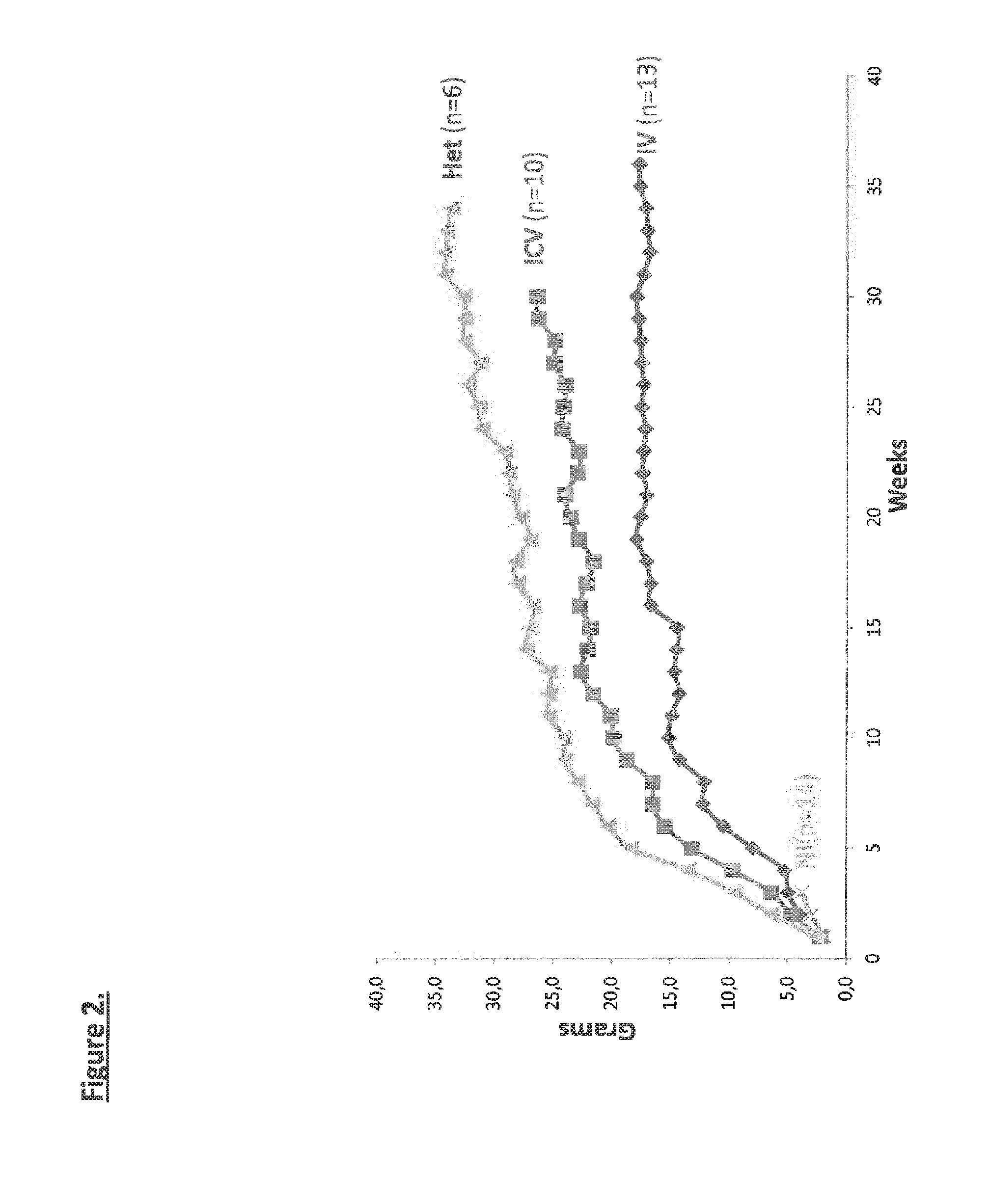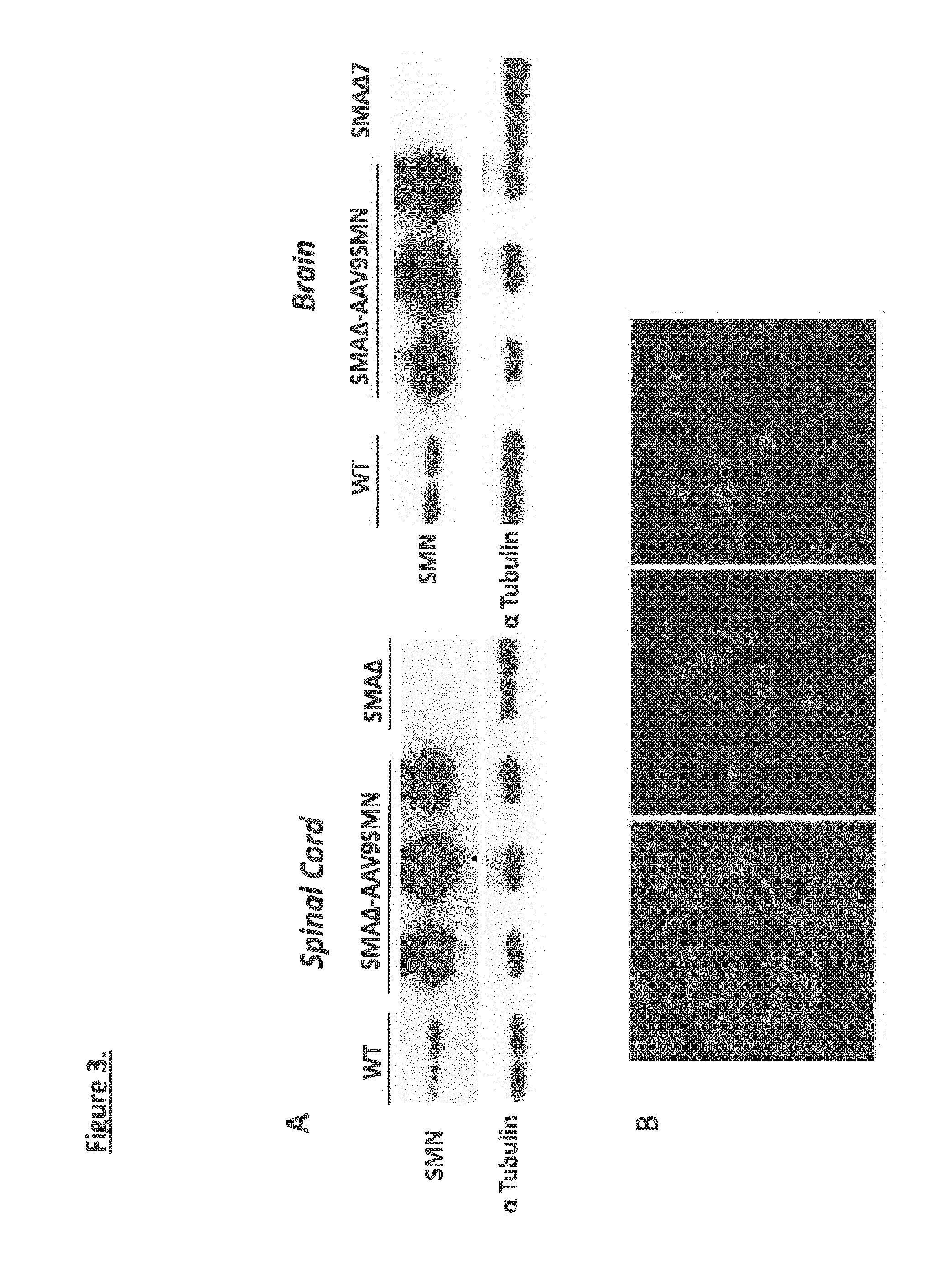Widespread gene delivery of gene therapy vectors
a gene therapy and vector technology, applied in the field of wide-spread gene delivery of gene therapy vectors, can solve the problems of failure of classical pharmacology, difficult alternative supply of mns with recombinant proteins injected directly into the cns parenchyma, and no treatment of these diseases, so as to reduce the dose of therapeutic gene administered, increase the stability of smn protein, and increase the level of smn
- Summary
- Abstract
- Description
- Claims
- Application Information
AI Technical Summary
Benefits of technology
Problems solved by technology
Method used
Image
Examples
examples
Materials and Methods
Animals
[0115]SMNdelta7 mice (considered as a model of SMA type I) were purchased from the Jackson Laboratory (SMN2+ / +, SMNdelta7+ / +, Smn− / −, JACKSON no. SN 5025). These mice are triple mutant invalidated for the endogenous murine Smn gene by targeted mutation of Exon 2 and harboring two transgenic alleles (the human SMN2 cDNA [lacking exon 7] and the entire human SMN2 gene) (Le T. T. Hum Mol Genet 2005). Wild-type mice (WT) corresponded to [SMN2+ / +, SMNdelta7+ / +, Smn+ / +] littermates, and heterozygous (Ht) to [SMN2+ / +, SMNdelta7+ / +, Smn+ / −] littermates. The mice were bred to generate self-sustaining colonies and maintained under controlled conditions (22±1° C., 60±10% relative humidity, 12 h / 12 h light / dark cycle, food and water ad libitum). All animal experiments were carried out according to the European guidelines for the care and use of experimental animals.
Production of scAAV Vectors
[0116]AAV2 plasmids expressing either the GFP transgene under control of the...
PUM
| Property | Measurement | Unit |
|---|---|---|
| weight | aaaaa | aaaaa |
| weight | aaaaa | aaaaa |
| weight | aaaaa | aaaaa |
Abstract
Description
Claims
Application Information
 Login to View More
Login to View More - R&D
- Intellectual Property
- Life Sciences
- Materials
- Tech Scout
- Unparalleled Data Quality
- Higher Quality Content
- 60% Fewer Hallucinations
Browse by: Latest US Patents, China's latest patents, Technical Efficacy Thesaurus, Application Domain, Technology Topic, Popular Technical Reports.
© 2025 PatSnap. All rights reserved.Legal|Privacy policy|Modern Slavery Act Transparency Statement|Sitemap|About US| Contact US: help@patsnap.com



